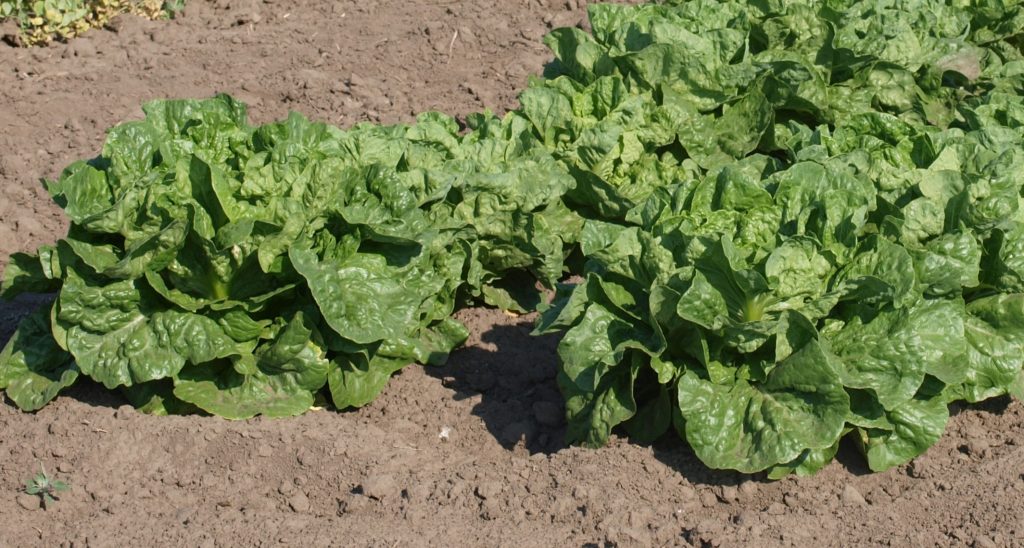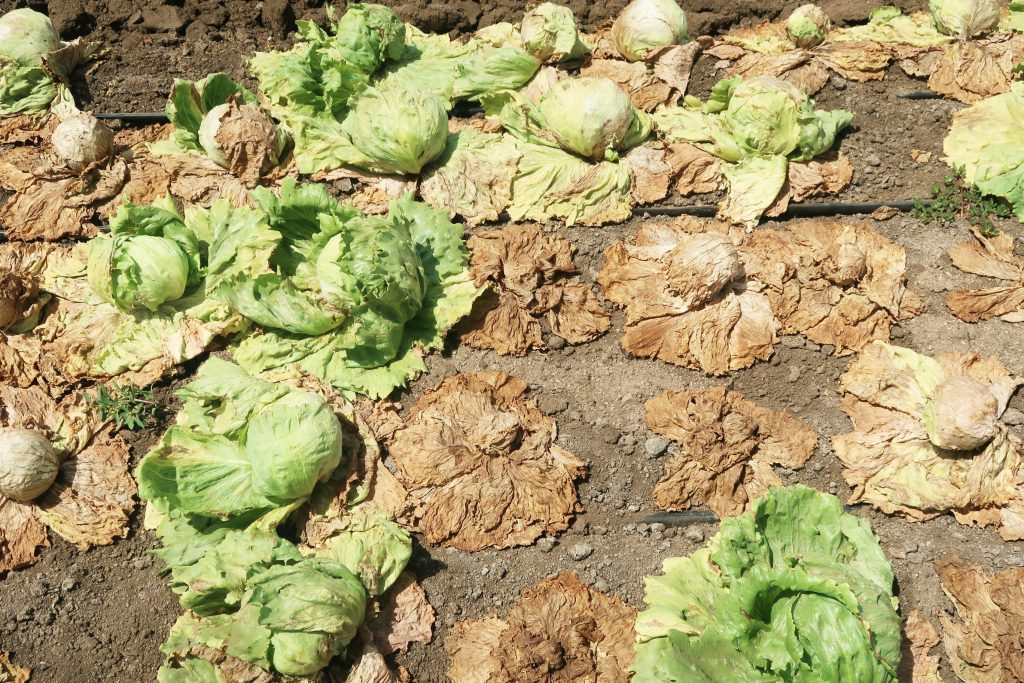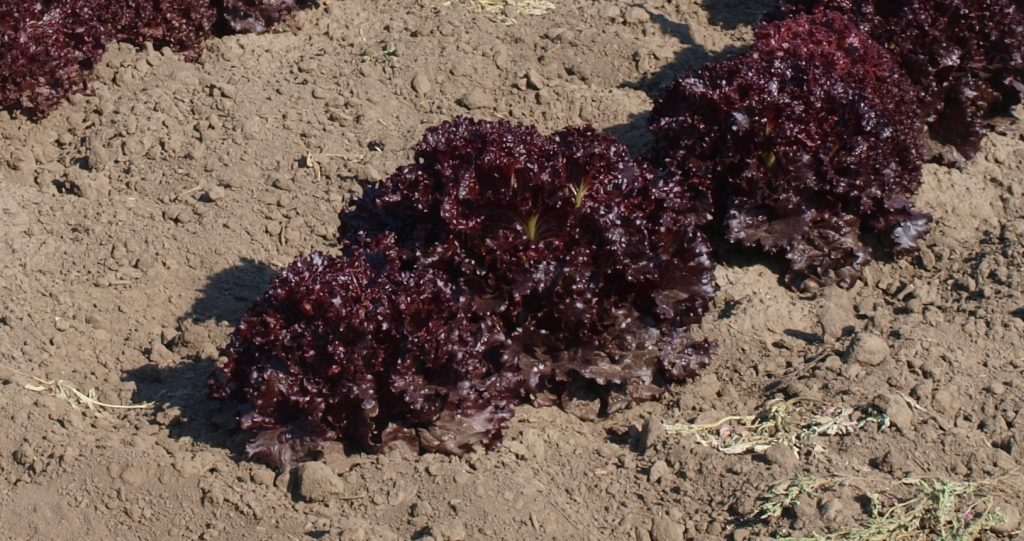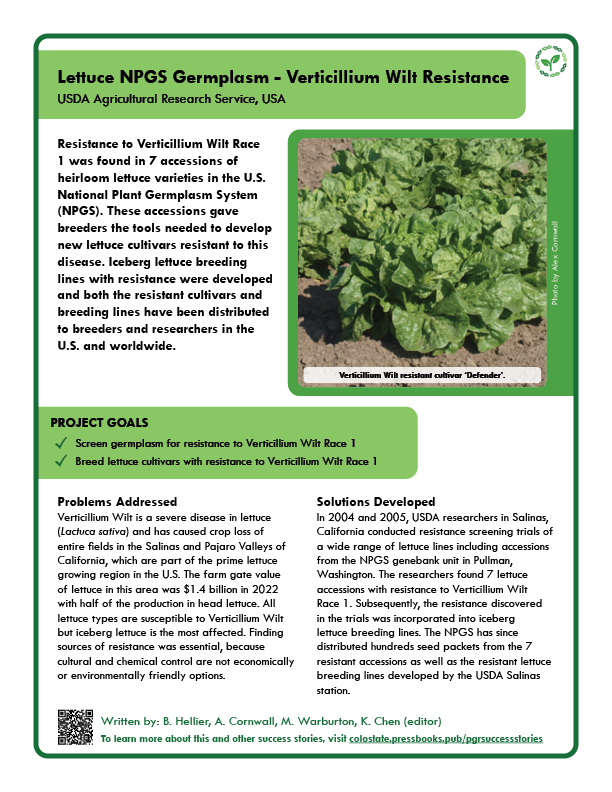Vegetables and Pulses
Lettuce NPGS Germplasm – Verticillium Wilt Resistance
VERTICILLIUM WILT RACE 1 RESISTANCE FOUND IN NPGS LETTUCE PLANT INTRODUCTIONS
Barbara C. Hellier; Alex M. Cornwall; and Marilyn L. Warburton
USDA-ARS Plant Germplasm Introduction and Testing Research Unit, 201 Clark Hall, Washington State University, Pullman, Washington 99164.
Corresponding author: marilyn.warburton@usda.gov
OUTLINE
- Summary
- Problems addressed
- Solutions developed
- Impact
- Germplasm
- Additional resources
- Chapter information
1. SUMMARY

Resistance to Verticillium Wilt Race 1 was found in 7 accessions of heirloom lettuce varieties in the U.S. National Plant Germplasm System (NPGS). These accessions gave breeders the tools needed to develop new lettuce cultivars resistant to this disease. Iceberg lettuce breeding lines with resistance were developed and both the resistant cultivars and breeding lines have been distributed to breeders and researchers in the U.S. and worldwide.
The goal was to screen and breed for resistance to Verticillium Wilt Race 1.
Download a printable fact sheet by clicking the image below.
2. PROBLEMS ADDRESSED

Verticillium Wilt, caused by Verticillium dahlia Kleb. is a severe disease in lettuce (Lactuca sativa L.) and has caused crop loss of entire fields in the Salinas and Pajaro Valleys, California, which are part of the prime lettuce growing region in the U.S. The farm gate value of lettuce in this area (Santa Cruz and Monterey counties, CA) was $1.4 billion in 2022 with half of the production in head lettuce (iceberg type). All lettuce types are susceptible to Verticillium Wilt but iceberg lettuce is the most affected. Finding sources of resistance was essential, because cultural and chemical control are not economically or environmentally friendly options.
3. SOLUTIONS DEVELOPED

In 2004 and 2005, researchers at the USDA-ARS Crop Improvement and Protection Research Station in Salinas, California conducted resistance screening trials of a wide range of lettuce lines including accessions from the USDA-ARS Western Regional Plant Introduction Station (the NPGS genebank unit in Pullman, Washington). The researchers found 7 accessions—older cultivars now maintained by the genebank unit—with resistance to Verticillium Wilt Race 1. Subsequently, the resistance discovered in the trials was incorporated into iceberg lettuce breeding lines.
Collaborators involved in developing solution:
- Ryan Hayes, Ivan Simko, and Steven Klosterman, USDA-Agricultural Research Service, Salinas, California, USA
- Gary Vallad, Qing-Ming Qin, Krishna Subbarao, and Karunakaran Maruthachalam, University of California, Davis, Davis, California, USA
- Rebecca Grube Sideman, University of New Hampshire, Durham, New Hampshire, USA
- Yaguang Luo, USDA-Agricultural Research Service, Beltsville, Maryland, USA
- Germán Sandoya, University of Florida, Belle Glade, Florida, USA
4. IMPACT
From 2011 to present (February 2024), the NPGS has filled 148 orders from lettuce breeders and researchers (with 21 of the orders from international requestors) for seeds from the iceberg lettuce breeding lines developed by the USDA-ARS Salinas Station. From 2007 to present, 139 seed requests have been filled for the 7 originally resistant accessions, with 44 of the orders sent to international requestors.
5. GERMPLASM
The seven cultivars found to have resistance to Verticillium Wilt Race 1 are: ‘Eruption’ PI 613577, ‘La Brilliante’ PI 617952, ‘Defender’ PI 667691, ‘Infantry’ PI 667699, ‘Merlot’ PI 667702, ‘Pavane’ PI 667705, and ‘Annapolis’ PI 690778.
Lettuce breeders at the USDA-ARS Salinas Station developed several iceberg breeding lines with resistance to Verticillium Wilt Race 1, including: W6 38953, W6 38954, W6 38955, W6 39944, W6 39945, W6 50789, PI 673090, PI 673091, PI 673092, PI 673093, PI 673094, PI 673095, PI 673096, and PI 673097.
6. ADDITIONAL RESOURCES
For more on this topic, read this article from SeedWorld, or any of the many scholarly articles on breeding and releasing lettuce accessions with resistance to Verticillium Wilt Race 1:
Atallah ZK, Hayes RJ, Subbarao KV. 2011. Fifteen years of Verticillium wilt of lettuce in America’s salad bowl: a tale of immigration, subjugation, and abatement. Plant Disease 95:784-792. https://doi.org/10.1094/PDIS-01-11-0075
Hayes RJ, Vallad GE, Qin QM, Grube RC, Subbarao KV. 2007. Variation for resistance to Verticillium wilt in lettuce (Lactuca sativa L.). Plant Disease 91:439-445. https://doi.org/10.1094/pdis-91-4-0439
Hayes RJ, Vallad GE, Ryder EJ, Subbarao KV. 2006. Release of Iceberg lettuce germplasm with resistance to Verticillium Wilt. Agricultural Research Service, U.S. Dept. of Agriculture, USA. Download from calgreens.org
7. CHAPTER INFORMATION
Citation: Hellier BC, Cornwall AM, Warburton ML. 2024. Lettuce NPGS Germplasm – Verticillium Wilt Resistance. In: Volk GM, Chen K, Byrne P (Eds.) Plant Genetic Resources: Success Stories. Fort Collins, Colorado: Colorado State University. Date accessed. Available from https://colostate.pressbooks.pub/pgrsuccessstories/chapter/lettuce-npgs-germplasm-verticillium-wilt-resistance/
Content originally submitted: March 1, 2024
Date of publication: May 20, 2024
USDA is an equal opportunity provider, employer, and lender. Mention of trade names or commercial products in this article is solely for the purpose of providing specific information and does not imply recommendation or endorsement by the U.S. Department of Agriculture.
About the authors
name: Barbara Hellier
institution: USDA Agricultural Research Service
Plant Germplasm Introduction and Testing Research Unit
barbara.hellier@usda.gov
name: Alex Cornwall
institution: USDA Agricultural Research Service
Plant Germplasm Introduction and Testing Research Unit
alex.cornwall@usda.gov
name: Marilyn Warburton
institution: USDA Agricultural Research Service
Plant Germplasm Introduction and Testing Research Unit
marilyn.warburton@usda.gov


